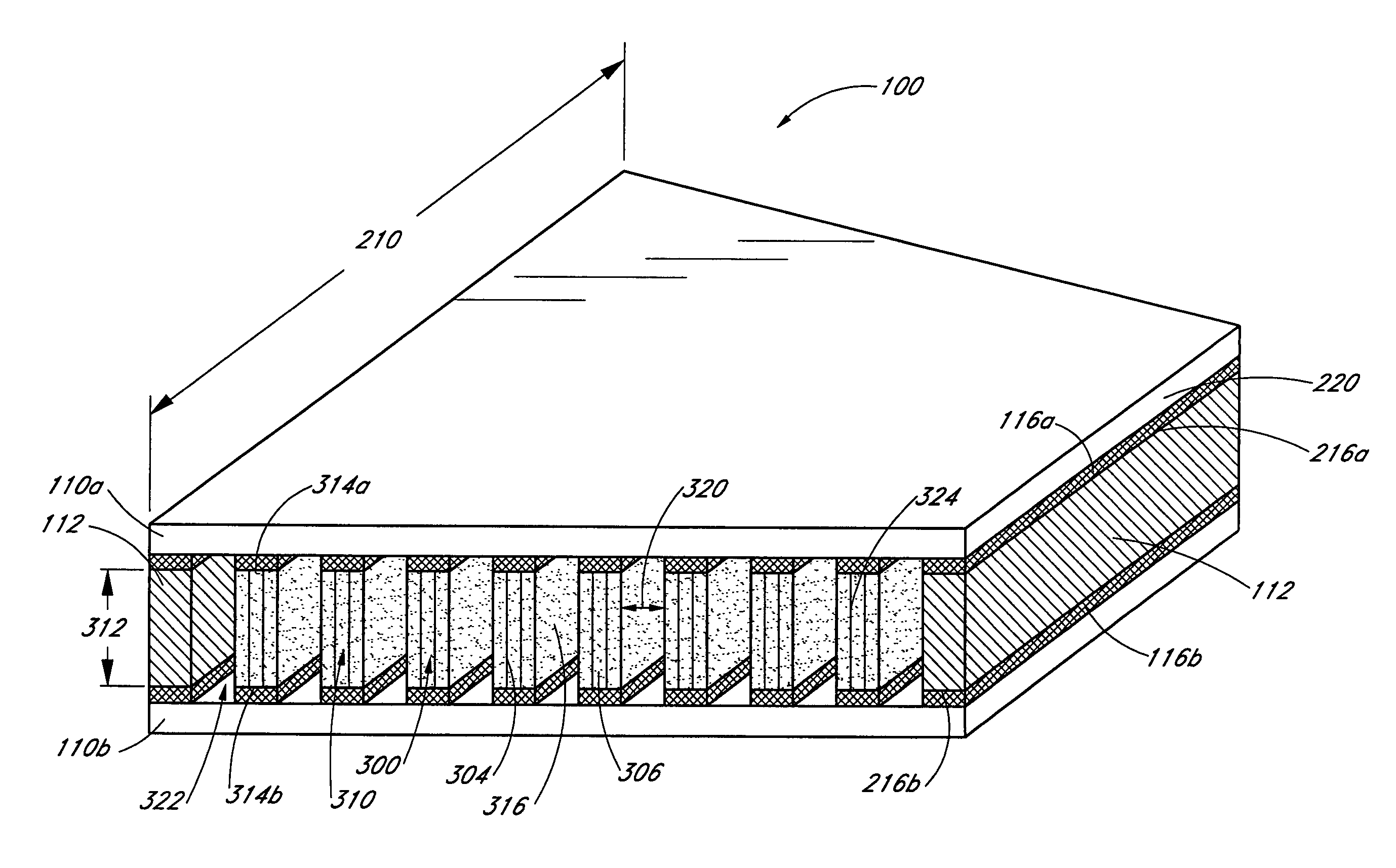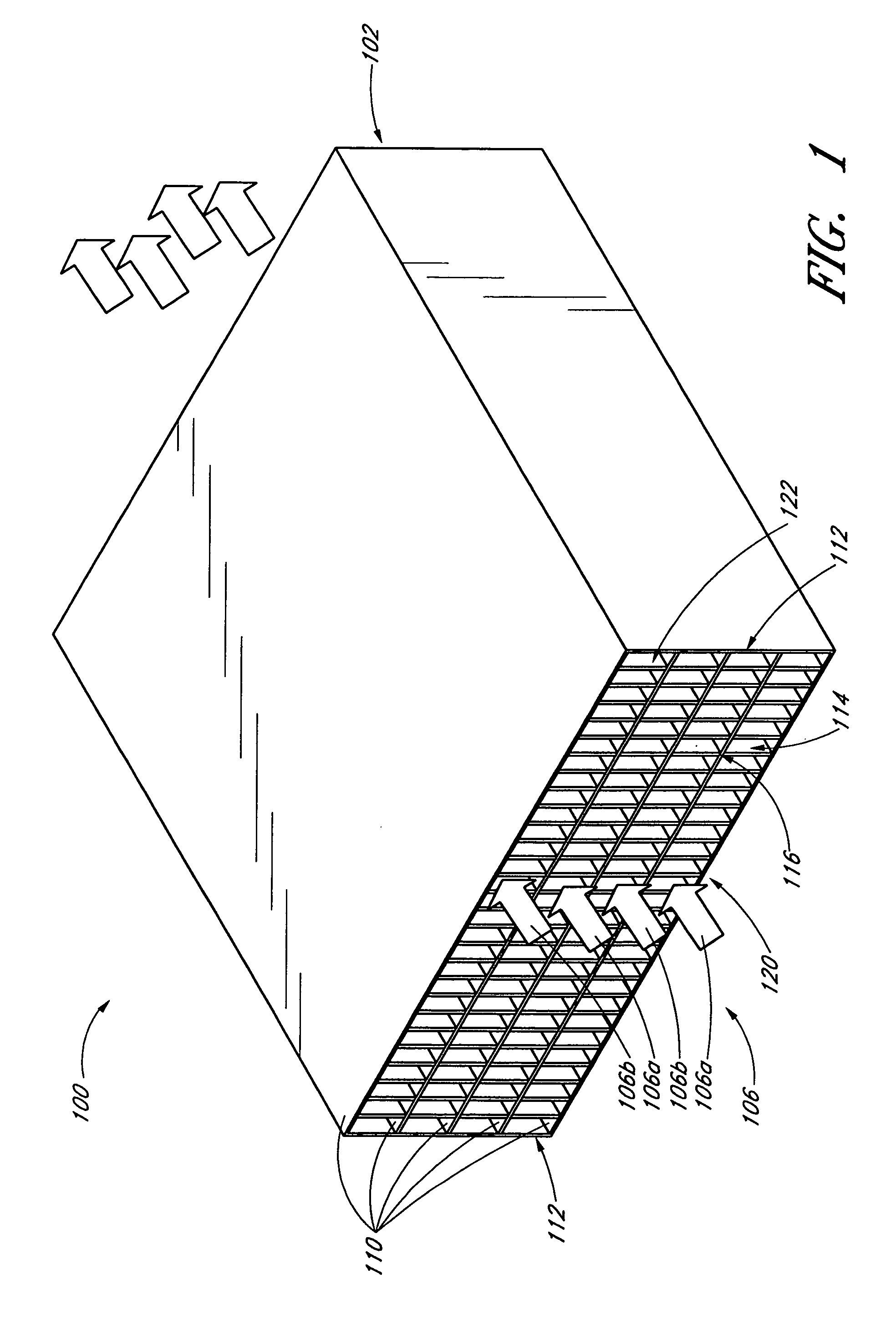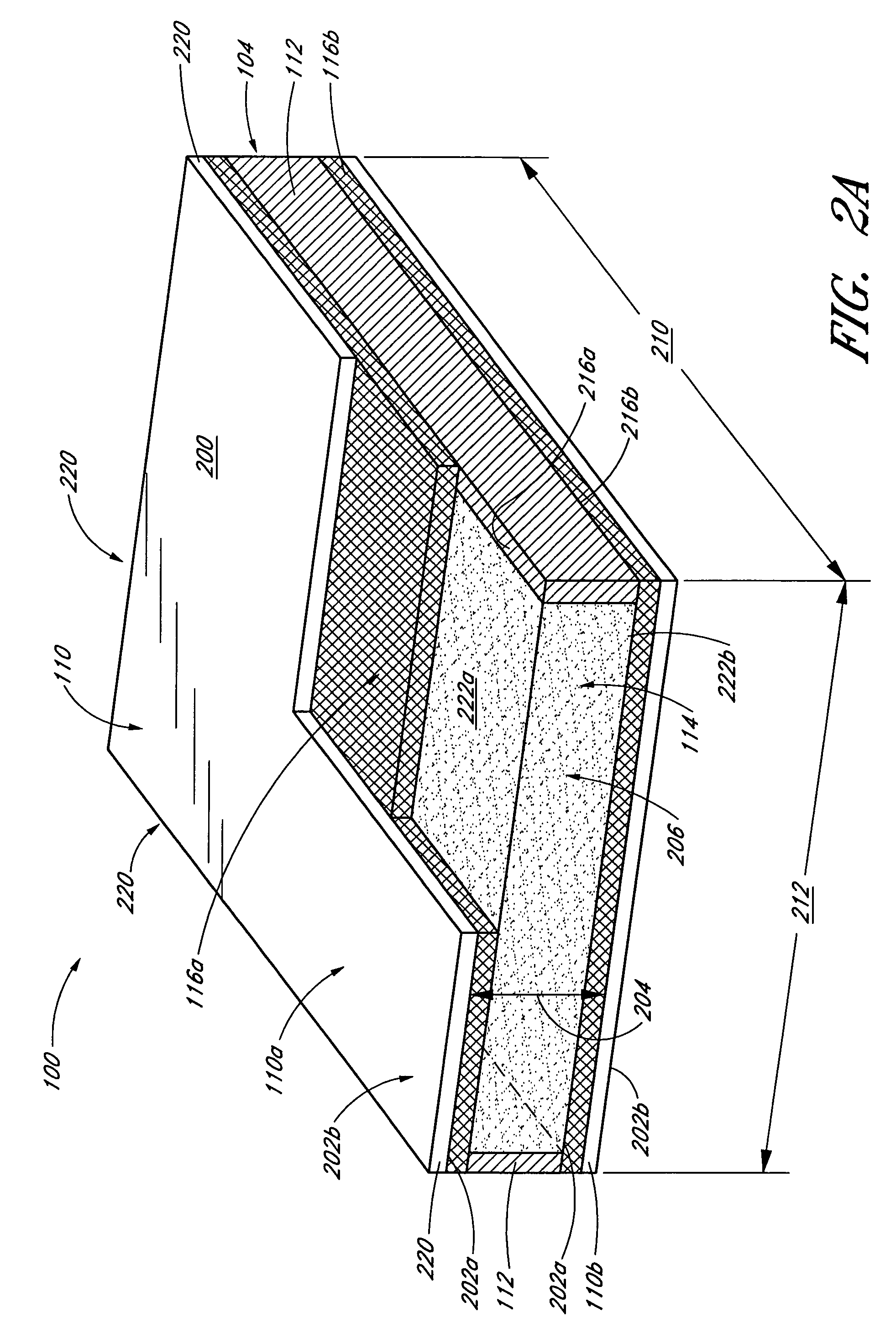Hybrid heat exchangers
a heat exchanger and hybrid technology, applied in the field of hybrid heat exchangers, can solve the problems of limited application, low thermal conductivity, inherent limitations of metal fabrication, etc., and achieve the effects of improving reliability, high thermal conductivity, and low density
- Summary
- Abstract
- Description
- Claims
- Application Information
AI Technical Summary
Benefits of technology
Problems solved by technology
Method used
Image
Examples
Embodiment Construction
[0030]Preferred embodiments of the present invention relate to heat exchanger cores and heat exchangers made with the same. The heat exchangers described herein are applicable to aerospace, energy, military and other related industries. Heat exchanger cores serve as the unit cells or building blocks for a heat exchanger, and preferably possess high thermal conductivity, with sufficient structural integrity to withstand operational loading and thermal stress, and allow for flow of fluid with minimal leakage, restriction to flow or pressure drop. As described herein, heat exchangers are devices that are used to transfer thermal energy between two or more fluids, between solid surfaces and a fluid, or between solid particulates and a fluid, where each is in thermal communication with the other and may be at a different temperature. Furthermore, the heat exchanger may be utilized in a closed system, where the heat transfer fluids are contained in a closed system or an open system, where...
PUM
 Login to View More
Login to View More Abstract
Description
Claims
Application Information
 Login to View More
Login to View More - R&D
- Intellectual Property
- Life Sciences
- Materials
- Tech Scout
- Unparalleled Data Quality
- Higher Quality Content
- 60% Fewer Hallucinations
Browse by: Latest US Patents, China's latest patents, Technical Efficacy Thesaurus, Application Domain, Technology Topic, Popular Technical Reports.
© 2025 PatSnap. All rights reserved.Legal|Privacy policy|Modern Slavery Act Transparency Statement|Sitemap|About US| Contact US: help@patsnap.com



